Update, April 30, 2019: Today I noticed there is another document from Oliver Cowdery mentioning Katumin and giving the same English text that Phelps provides. The document is listed as “‘Valuable Discovery,’ circa Early July 1835.” Interestingly, Cowdery places some of the same Egyptian characters in line with the English. His document, from a notebook signed on the cover by Joseph Smith, associates only 6 or 7 characters with the English text, which may explain what he means when speaking of the “comprehensive” nature of the Egyptian and may indicate that Phelps believed he had only provided part of the translation of the Egyptian after all. I may have been wrong in my analysis below, at least in part.
Cowdery, like Phelps in his notebook, spells the names without the added “h” after some vowels that would become more common after Joseph and his brethren began study Hebrew at the end of 1835 and especially in 1836 when Joshua Seixas came to Kirtland at Joseph’s request. These spelling clues may be one of the most important things about these documents, showing how spelling changes after Joseph and his brethren began zealously learning Hebrew from Joshua Seixas in early 1836, which has the surprising implication that the dates many people have assumed for the Kirtland Egyptian Papers are simply too early, and may need to be reclassified as 1836 works, thus coming after the translation of at least much of the Book of Abraham had been completed. Further research is needed on this issue. See the discussion on my following post from April 30, 2019, “Two Important, Even Troubling, Clues About Dating from W.W. Phelps’ Notebook with Egyptian ‘Translation’.”
My original post here follows. Take it with a grain of salt, though it may still apply to what Phelps initially thought.
It is possible that Cowdery’s document influenced Phelps and made him realize that the translation he provided may only be a partial translation, leading to the later use of pencil to add “in part” in a note on his document. Or Phelps may have understood that same association of characters. Cowdery’s final character is backwards compared to Phelps, showing how poor the quality was for the copying of Egyptian characters. Phelps’ view of the relationship between the Egyptian and the English may have changed, leading him to later pencil in “in part,” or it may have been the same as Cowdery’s all along. In any case, this important data does show that at least one scribe may have attributed a large number of words to a few Egyptian characters, with 7 or 8 characters representing about 50 words of English — still not one character for hundreds of words, though Cowdery’s second sentence has just one character, making it relatively expansive. This certainly weakens the argument that there was a much less compact relationship. However, with Katumin occurring at the beginning and again in the middle of Phelps’ English and in the Egyptian characters associated with it. it may be that when he penned his statement, he thought the ratio of Egyptian to English was not much smaller than 1, but later changed his mind based on input from Cowdery. Still unclear.
These issues are secondary compared to the more important issue coming from this document: the pre-Seixas spelling of Onita and Katumin in Phelps’ document, with the same spelling of Katumin in Cowdery’s, while he has “Onitas” instead of Onitah
The manuscript from W.W. Phelps that presents three lines of Egyptian and four lines of English as a translation deserves more attention, in my opinion (see the document and discussion in my recent post, “Did Joseph’s Scribes Think He Translated Paragraphs of Text from a Single Egyptian Character? A View from W.W. Phelps“). Some have argued here that the later addition of a faint “in part” on the page is consistent with the idea that Phelps thought Joseph was translating large chunks of text from single characters, but there’s no hint of such a view in Phelps’ letter. But let’s take a closer look.
Note that the first English word, Katumin, happens to be a name that is found in the Kirtland Egyptian Papers. Let’s see what we can learn about Katumin from that source. In occurs in all three of the Egyptian Alphabets (Egyptian Alphabet A by Oliver Cowdery and Warren Parrish, Egyptian Alphabet B by Oliver Cowdery and Egyptian Alphabet C by W.W. Phelps). Here are the relevant portions of A, B, and C in order, followed by the transcriptions:
Alphabet A: “Kah tou man / the name of a royal family in female line”
Alphabet B: “Kah-tou=mun / The name of the a royal famil[y]— The female line”
Alphabet C: “Kah=tou=mun / The name of the <a> royal family, in the female line”
The symbol for this female name is something like an “0” or a pair of adjacent parentheses.
Interestingly, Phelps’ English translation begins with a variation of this name:
Katumin, Princess, daughter of On=i=tas <King> of Egypt, who began to reign in the year of the world, 2962. Katumin was born in the 30th year of the reign of her father, and died when <s>he was 28 years old, which was <the year> 3020
Katumin occurs twice, once at the beginning (reading right to left) and again midway. Now look at the Egyptian. Notice any “O”-like symbols? There is a double O at the beginning and then another almost exactly in the middle of the text:
If Phelps understood that Egyptian characters roughly correspond to individual English words, it would make sense that he’d have Katumin at the beginning and in the middle. Having a character associated with Katumin/Kahtouman at the beginning and the middle of the Egyptian, and having Katumin at the beginning and middle of the English, ought to rule out the notion that Phelps was just translating one character rather than seeing a general correspondence between a word or two of Egyptian and a word or two of English.
Why the double “O” at the start? Not sure. But notice the horizontal line over that lead O, connecting it to the next. Could this be related to the character for “princess” in the Egyptian Alphabet? It’s a horizontal line with a little blob on the upper part of the left end. From Alphabet C:
Without the blob, it can mean daughter:
Maybe Phelps thought a Katumin “O” with the horizontal line added for “Princess” could have the blob blow up to another Katumin marker. Or maybe he thought the line mean Katumin was a daughter of a king, equivalent to “princess.” Sure, he didn’t know what he was doing, but there’s a possibility that using the Egyptian Alphabet, he saw “Katumin, Princess” or “Katumin, daughter” (of a king) at the beginning, and again a Katumin in the middle. Note that both instances are followed by what may be the same character, a pair of circles connected by a vertical line. Perhaps Phelps thought this described a parent-child relationship, so the first occurrence is “translated” to express that she was a daughter (of a king), and the second to express that she was born (during the reign of her father).
Some characters occur in his Egyptian that also show in the Alphabet, including several related characters that can mean king, Pharaoh, or first being:
Also consider this right angle character, related to government:
The name “Onitah” also occurs here, as it does in the Book of Abraham manuscripts with occasional Egyptian characters in the left margin. Here is the one that is associated with the paragraph speaking of Onitah, followed by the English text it is next to, both taken from Book of Abraham Manuscript C, page 2:
Here is the text:
now this priest had offered upon this altar three Virgins at one time who were the daughters of Onitah, one of the royal descent directly fro[m] the loins of Ham; these Virgins were offered up because of their virtue, they would not bow down to worship gods of wood and <or of> stone
One speculative theory might be that Phelps saw this character as somehow related to the name Onitah, and saw it as characterized by having three vertical lines rising from a baseline. If so, he may have seen a relationship to one of his Egyptian characters that would be in roughly the “right place” (my opinion) for the occurrence of the name Onitah in his translation. Yes, speculative.
The table below shows the Egyptian characters, as I guess Phelps may have broken them up. I number them and also list a column for “echoes” where I group together some characters that may look related, and assign the letter A through H for the groupings. Possible meanings in Phelps’ mind are listed in the fourth column, all speculative. If the meaning comes from a similar character in the Egyptian Alphabet, I give the word without parentheses around it. If it’s just my guess without support from the Egyptian Alphabet (which is hopelessly incomplete if it were supposed to be a tool for translating Egyptian), then I put the word in parentheses.
| # | Echoes | Char. | Possible meaning |
| 1 | A |  |
Katumin + Princess? |
| 2 | H | (daughter?) | |
| 3 | E | King/Pharaoh? | |
| 4 | (Egypt?) | ||
| 5 |  |
(Onitah?) | |
| 6 | F | ||
| 7 | (reign? king?) | ||
| 8 | B | ||
| 9 | F | ||
| 10 | B |  |
|
| 11 |  |
||
| 12 |  |
Who (+ began?) | |
| 13 | (reign?) | ||
| 14 | |||
| 15 | |||
| 16 | E? | reign/kingdom? | |
| 17 | |||
| 18 | |||
| 19 | B | (year?) | |
| 20 | |||
| 21 | |||
| 22 | |||
| 23 | |||
| 24 | |||
| 25 | |||
| 26 | E | (king?) | |
| 27 | D | ||
| 28 | F | ||
| 29 | (2962? number?) | ||
| 30 | A | Katumin | |
| 31 | H | (she/daughter?) | |
| 32 | 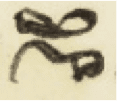 |
||
| 33 | D | ||
| 34 | |||
| 35 | |||
| 36 | |||
| 37 | |||
| 38 | Princess? (+ something?) | ||
| 39 | |||
| 40 | |||
| 41 | |||
| 42 | C, G | (year?) | |
| 43 | |||
| 44 | |||
| 45 | |||
| 46 | |||
| 47 | |||
| 48 | (year?) | ||
| 49 | |||
| 50 | C | ||
| 51 | 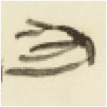 |
(30?) | |
| 52 | |||
| 53 | C, G | (year? Or 3020) | |
| 54 | (3020?) |
The groupings I see are:
- A, circle or paired arcs, characters 1, 29
- B, 3 or 4 horizontal lines, characters 8, 10, 28, 41, 47, 50, 52, 53
- C, 2 vertical lines rise from horizontal base, characters 41, 49, 52
- D, right angle pointing to the right, characters 26, 32
- E, king, characters 3, 26
- F, curvy T with a lobe?, characters 6, 9, 28
- G, 3 lines + 2 vertical risers at bottom, characters 42, 53
- H, (daughter?), characters 2, 31
In any case, the existence of duplicate Egyptian characters such as 2 and 31, and the apparent appearance of Katumin at the beginning and middle in both English and Egyptian (using what Phelps would have understood from the Alphabet, that is), suggests that Phelps’ English text is not his “translation” from a single character, but from many characters of Egyptian.
This post is part of a recent series on the Book of Abraham, inspired by a frustrating presentation from the Maxwell Institute. Here are the related posts:
- “Friendly Fire from BYU: Opening Old Book of Abraham Wounds Without the First Aid,” March 14, 2019
- “My Uninspired “Translation” of the Missing Scroll/Script from the Hauglid-Jensen Presentation,” March 19, 2019
- “Do the Kirtland Egyptian Papers Prove the Book of Abraham Was Translated from a Handful of Characters? See for Yourself!,” April 7, 2019
- “Puzzling Content in the Egyptian Alphabet and Grammar,” April 14, 2019
- “The Smoking Gun for Joseph’s Translation of the Book of Abraham, or Copied Manuscripts from an Existing Translation?,” April 14, 2019
- “My Hypothesis Overturned: What Typos May Tell Us About the Book of Abraham,” April 16, 2019
- “The Pure Language Project,” April 18, 2019
- “Did Joseph’s Scribes Think He Translated Paragraphs of Text from a Single Egyptian Character? A View from W.W. Phelps,” April 20, 2019
- “Wrong Again, In Part! How I Misunderstood the Plainly Visible Evidence on the W.W. Phelps Letter with Egyptian ‘Translation’,” April 22, 2019
- “Joseph Smith and Champollion: Could He Have Known of the Phonetic Nature of Egyptian Before He Began Translating the Book of Abraham?,” April 27, 2019
- “Digging into the Phelps ‘Translation’ of Egyptian: Textual Evidence That Phelps Recognized That Three Lines of Egyptian Yielded About Four Lines of English,” April 29, 2019
- “Two Important, Even Troubling, Clues About Dating from W.W. Phelps’ Notebook with Egyptian “Translation”,” April 29, 2019
- “Moses Stuart or Joshua Seixas? Exploring the Influence of Hebrew Study on the Grammar and Alphabet of the Egyptian Language,” May 9, 2019
- “Egyptomania and Ohio: Thoughts on a Lecture from Terryl Givens and a Questionable Statement in the Joseph Smith Papers, Vol. 4,” May 13, 2019
- “More on the Impact of Hebrew Study on the Kirtland Egyptian Papers: Hurwitz and Some Curiosities in the GAEL,” May 20, 2019
- “He Whose Name Cannot Be Spoken: Hugh Nibley,” May 27, 2019
- “More Connections Between the Kirtland Egyptian Papers and Prior Documents,” May 31, 2019
- “Update on Inspiration for W.W. Phelps’ Use of an Archaic Hebrew Letter Beth for #2 in the Egyptian Counting Document,” June 16, 2019
- “The New Hauglid and Jensen Podcast from the Maxwell Institute: A Window into the Personal Views of the Editors of the JSP Volume on the Book of Abraham,” July 1, 2019
- “The Twin Book of Abraham Manuscripts: Do They Reflect Live Translation Produced by Joseph Smith, or Were They Copied From an Existing Document?,” July 4, 2019
- “Kirtland’s Rosetta Stone? The Importance of Word Order in the ‘Egyptian’ of the Grammar and Alphabet of the Egyptian Language,” July 18, 2019
- “The Twin BOA Manuscripts: A Window into Creation of the Grammar and Alphabet of the Egyptian Language?,” July 21, 2019
- “A Few Reasons Why Hugh Nibley Is Still Relevant for Book of Abraham Scholarship,” July 25, 2019

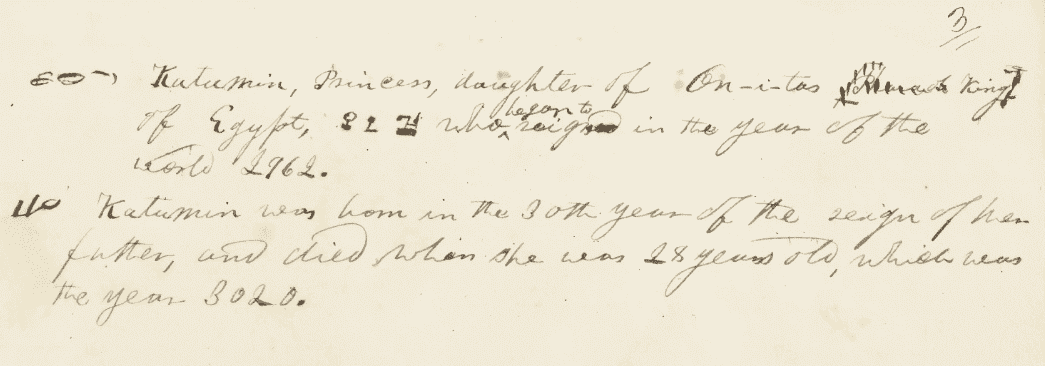


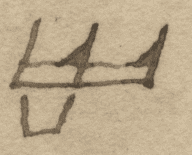
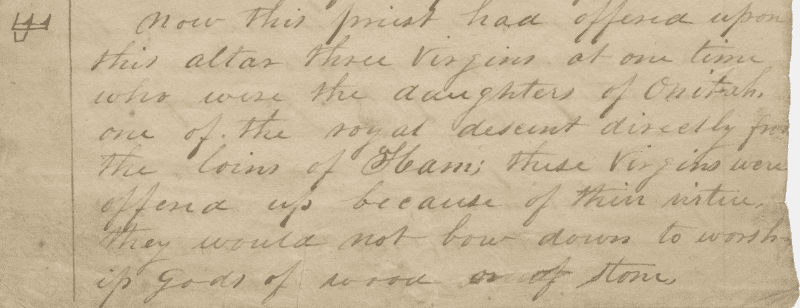
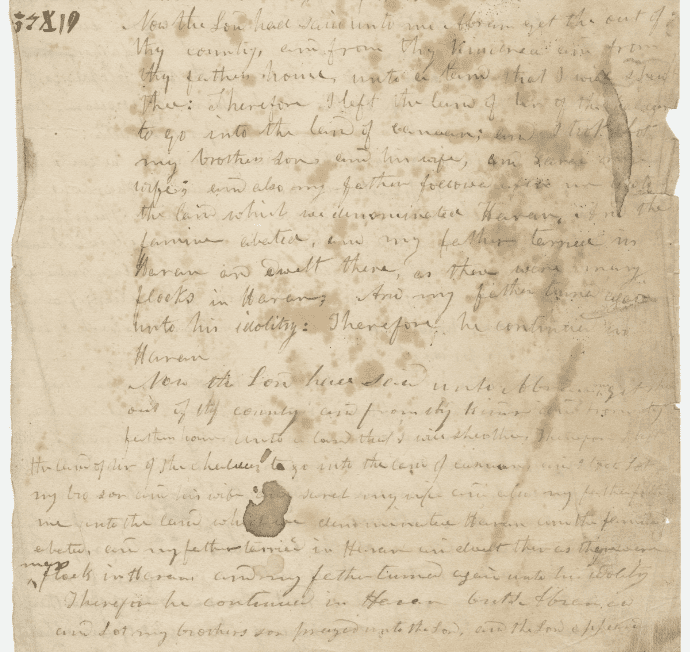

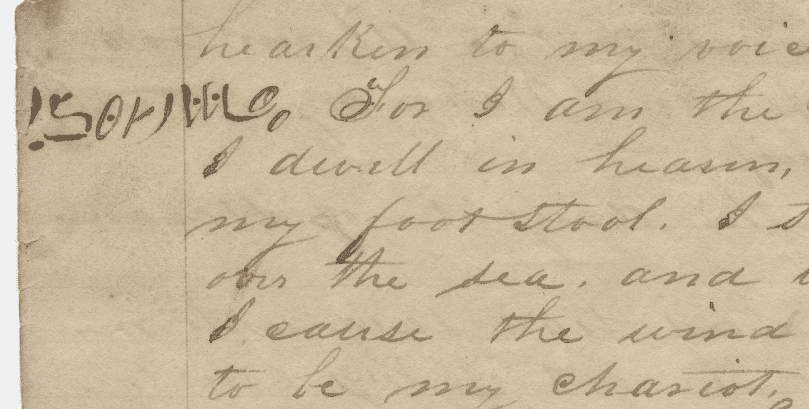







Regardless of the details re Phelps's fiddling, it remains true that the Joseph Smith Papyri are ordinary Egyptian funeral documents and not the source of the Book of Abraham, which — with its expression of modern racialist theories, its timely borrowings from Philosophy of a Future State, etc. — is obviously a 19th-century text.
Jeff, in light of your comments about the inspirational value of taking your sacred texts as history rather than "mere" story, that kind of literalism can backfire badly. After all, the Church's long-running policy of banning black people from the priesthood, from temple marriage, and other forms of full participation in LDS religious life did a lot of damage to the Church (not to mention to black Mormons). And that policy was directly motivated by the belief that black people were literally the historical descendants of Ham, who was believed to have literally committed a historical transgression that justified the Church's embarrassing racism.
This kind of literalism has also inspired many other terrible things, e.g., 2,000 years of antisemitism rooted in the belief that the Jews killed God, though thankfully the LDS Church has never fallen for this one.
— OK
You know, Jeff, it's getting to sound a bit desperate to find shreds to hang onto. Both the Smithsonian and National Geographic have said officially that they've never seen anything that supports the BOM. In fact, no one in the world takes it seriously but the 2% of the world's population who are Mormon.
And, let's face it, most of that 2% are Mormon because they were born that way and have been indoctrinated from birth. Even so, an increasing number have stopped taking the BOM literally. They're willing to accept that Joseph Smith made it up but find something redeemable or comfortable about remaining Mormon or not rocking the boat.
You're never going to prove that there's anything real or historical or true about the BOM. Just embrace it, if that's what you need to do, without going through these painful mental gymnastics.
Anon 11:21, just a quick correction: the actual figure is not 2 percent.
It's 0.2 percent.
— OK
The prior anonymous posters are quite the pair! Hovering about Jeff's blog, rapidly replying to each post with almost cut-and-paste responses.
Neither engages the underlying documentation or the points Jeff is making. OK can barely muster a "Regardless of the details of Phelp's fiddling . . . ", before a bald regurgitation of the standard antagonist line as fact followed by a statement about "damage" done by the church, with a dollop of other similar "terrible things" done in the name of "literalism". What's the point of this spooky talk in this context? Beware to all–Jeff's laborious effort to understand these cryptic historical documents might result in renewed racism or even the holocaust! Or to bully Jeff off the topic altogether?
The second commentator doesn't even bother to address Jeff's post at all, rather attacking the BOM (with an appeal to authority!) and marshaling support by ominously reading the minds of "an increasing number" of Mormons.
They cap it off with a high five over percentages. What a pair! One wonders if they are working side-by-side at a sleepy call center some where, coordinating their responses, patrolling the internet, making sure no pro-Mormon post goes unanswered.
Jeff here is doing yeoman's work. Sure, he's a believing Mormon, but by all accounts an informed and energetic scholar (and a lot more expert on the subject matter than these two). Further, it's clear from Jeff's work (and from the vapid, retread responses here) that the standard line against the Book of Abraham is not as simple as these two would like it to be.
Anon "painful mental gymnastics"
Watching contortionist may make us cringe a little, but it is not painful for them. Jeff knows he is being silly and playing games, but even if he has to make up halve the words, he just enjoys doing the crossword puzzles. Messing around with people who don't get it and see it as painful, is part of his fun.
Here we go again!
More mind reading from the anonymous commentators, this time accusing Jeff of not only of engaging in outright fraud, but actually doing it for sport. Jeff has been nothing but forthright about his efforts, his concerns and his mistakes. Jeff has asked for civil, intelligent comments. Instead, he is libeled for his trouble.
Further, an ad hominem attack (such as this) is one of the oldest logical fallacies, and is usually made by a person with nothing else to support his position.
I only just started following this blog and know next to nothing about the subject matter, but so far, Jeff is the most credible person posting here.
If that was mind reading, libeling, and ad hominem, then Jeff does it all the time. He has gotten as good as he gives.
Ah, I see now. Jeff deserves it. HE has dragged YOU down into the mud!
If you wish to call what Jesus did mudslinging, that is your prerogative.